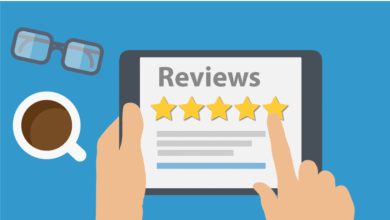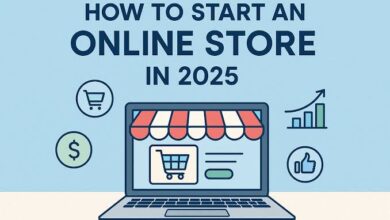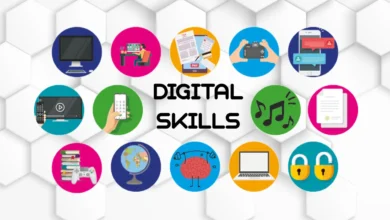10 Proven Strategies to Get More Customers This Month

Have you ever felt that constant pressure to bring in new customers, no matter how well your business is doing? You’re not alone. Whether you’re a small shop owner, an energetic marketer, or the go-to person for sales in your company, the drive to get more buyers through your doors (virtual or physical) often feels never-ending. The business world is always changing, and with it comes the challenge, and opportunity, to grow quickly and stay ahead of the competition.
Here’s the comforting truth: there are proven strategies to get more customers this month that work no matter how crowded your industry is or how much of a marketing budget you have. Even with all the new trends popping up, fancy ads, viral videos, influencer shoutouts, the need to connect authentically with people and offer real value never goes away.
This article is packed with 10 proven, practical strategies that you can use right now. We’re not talking about big, complicated systems that take months to build. These are actionable steps designed for go-getters like you who want customers fast, and want to keep them coming back. If you own a business, work in sales, help with marketing, or you’re an entrepreneur just starting out, you’ll find simple tools here for measurable results.
You’ll discover how everything from updating your online profiles to launching creative campaigns can turn this month into your best one yet. Ready to take action? Let’s jump in.
10 Proven Strategies to Get More Customers This Month
Before we dig into each strategy, remember this: getting more customers is not about luck, it’s about using the right tactics at the right time. Some ideas might feel familiar. Others could be brand new. The power comes from actually trying them, measuring your progress, and tweaking as you go. Apply just a few of these strategies and you’ll likely see a surge in new customers before the month is done.
Strategy 1: Optimize Your Online Presence
Your online presence is like your business’s digital home. When customers search for products or services on Google or social media, they expect to find clear, helpful, and professional information about you immediately. Having a strong, up-to-date online presence means your business looks trustworthy and easy to connect with.
Why it matters:
Statistics show that over 95% of buyers research businesses online before buying. If your website is slow, outdated, or hard to use on phones, many potential customers will leave and choose your competitors instead. Google also favors mobile-friendly and well-built websites, so SEO (Search Engine Optimization) improves if your site works well.
What you can do:
- Refresh your website design: Update to a clean, modern look that’s easy to navigate. Make sure pages load fast (ideally under 3 seconds), so visitors don’t get impatient.
- Mobile responsiveness: Test your website on different smartphones and tablets. If navigation or buttons don’t work well on small screens, fixes are urgent.
- Clear and visible calls to action (CTAs): Use simple phrases like “Call Now,” “Get a Free Quote,” or “Shop Today.” These guide customers on what to do next.
- Update your Google My Business profile: Add accurate hours, location, photos, and a description. Keep this profile fresh because it appears in local Google searches and maps.
- Maintain your social media profiles: Post new pictures, videos, or updates so people know you’re active and reliable.
| Step | Task Description | Notes/Tools |
| Website audit | Check site speed, mobile usability, and content | Use Google PageSpeed, Mobile-Friendly Test |
| Update CTAs | Add clear “Call Now,” “Get Quote,” “Shop” buttons | Use action-oriented language |
| Refresh website content | Correct outdated info, add recent testimonials/photos | Ensure contact info is visible |
| Google My Business | Complete profile: hours, address, photos, reviews | Keep info updated regularly |
| Social media profiles | Update profile images, bios, contact details | Post 2-3 recent updates |
Extra tip:
Consider adding a blog where you share helpful tips related to your products or services. This boosts SEO and builds trust with your audience over time.
Read Next: The Future of Remote Work: What to Expect by 2030
Strategy 2: Leverage Social Media Marketing
Social media platforms are not just about sharing funny posts, they offer powerful ways to reach and engage your exact target customers. In 2025, platforms like Instagram, TikTok, Facebook, and LinkedIn remain popular ways to connect with different audiences.
Why it matters:
Businesses that use social media smartly see big increases in brand awareness and customer enquiries. With zero cost to create an account and low-cost advertising options, social media can deliver measurable growth fast.
What you can do:
- Choose 1-2 platforms wisely: Where do your customers spend most time? Young people often prefer TikTok or Instagram; professionals may be on LinkedIn.
- Create engaging content: Use polls (“Which product do you prefer?”), behind-the-scenes videos, stories showing how your product works, or live Q&A sessions. The goal is to start conversations, not just sell.
- Run targeted ads: Platforms allow you to choose exactly who sees your ads based on age, location, interests, and buying habits. You can launch a campaign promoting a special offer or event to increase visibility rapidly.
- Respond to comments and messages: Fast replies show customers you care and encourage them to take the next step.
| Step | Task Description | Notes/Tools |
| Identify top platforms | Research where your customers spend time | Use Facebook Insights, Instagram Analytics |
| Content calendar | Plan posts: polls, Q&As, behind-the-scenes, promotions | Schedule with tools like Buffer or Hootsuite |
| Create engaging content | Design eye-catching images/videos or text posts | Use Canva, TikTok videos |
| Run targeted ad campaign | Set budget; define audience by age, location, interests | Facebook Ads Manager, Instagram Ads |
| Respond to interactions | Reply promptly to comments and direct messages | Turn conversations into relationships |
Extra tip:
Use social listening tools to monitor what people say about your brand or competitors. This insight helps you stay relevant and improve your offerings.
Strategy 3: Implement Referral Programs
A happy customer telling a friend about your business is one of the strongest ways to attract new customers. Referral programs give your existing customers a reason to spread the word and reward them for it.
Why it matters:
Referral leads have higher trust and tend to buy quicker. Plus, referral programs usually cost less than traditional advertising since you reward only when new business arrives.
What you can do:
- Simple rewards: Offer discounts, gift cards, or freebies to both the referrer and the new customer, such as 10% off the next purchase.
- Clear communication: Tell your customers about your referral program through emails, website banners, social media posts, and in-person conversations.
- Make sharing easy: Provide sharing links, personalized referral codes, or printable referral cards.
- Track and thank: Use a system or software to track referrals accurately and always thank customers for bringing in new business.
| Step | Task Description | Notes/Tools |
| Design referral offer | Choose type of reward (discount, gift, points) | Keep rewards equal for referrer and referred |
| Create referral materials | Develop referral codes, sharable links/cards | Use referral software like ReferralCandy or manual codes |
| Communicate program | Announce via email, website, social media | Make instructions clear and simple |
| Track referrals | Monitor number of new customers and rewards | Use a spreadsheet or referral app |
| Thank participants | Send personalized thank you notes/offers | Builds goodwill |
Extra tip:
Encourage customers to leave online reviews as part of your referral effort, positive reviews help build your local reputation.
Read Next: 10 Best Niches for Dropshipping in 2025
Strategy 4: Offer Irresistible Incentives (Limited Time)
Limited-time deals and special offers tap into people’s fear of missing out (FOMO). These incentives motivate immediate action, which means faster sales.
Why it matters:
Customers are more likely to buy if they see a deal won’t last forever. They also encourage first-time buyers to try your products or services, potentially becoming long-term clients.
What you can do:
- Create clear offers: Examples include “20% off for the next 3 days,” “Buy One Get One Free this weekend,” or “Free shipping for orders over $50 this week.”
- Promote everywhere: Post your limited-time deals on your website, social media pages, email newsletters, and even offline in stores or flyers.
- Highlight urgency: Always mention the exact deadline so people know they can’t wait.
- Track sales: Monitor which offers work best and learn what attracts customers most.
| Step | Task Description | Notes/Tools |
| Create offer details | Decide offer type, discount %, conditions | Example: 20% off first 50 buyers |
| Design marketing copy | Write emails, banners, social media posts | Use urgency triggers like countdown timers |
| Promote offer | Share via email, website banners, social media | Pin banners on website homepage |
| Monitor performance | Track sales generated by the offer | Use Google Analytics, sales reports |
| Set clear expiration | State deadline on all marketing materials | Avoid vague deadlines |
Extra tip:
Pair limited-time offers with countdown timers on your website or social media stories to increase urgency.
Strategy 5: Host a Free Workshop or Webinar
Offering a free online or in-person event lets you demonstrate your expertise and connect personally with potential customers interested in your field.
Why it matters:
People are more likely to trust and buy from someone who educates them first. Plus, workshops build your email list and relationships with interested prospects.
What you can do:
- Choose topics your customers care about: For example, a bakery could teach “How to Bake Perfect Cupcakes” or a small business coach could host “3 Steps to Boost Your Sales.”
- Promote your event: Use social media, email, local community boards, and paid ads if possible.
- Collect information: Ask attendees to register with their email addresses so you can follow up.
- Deliver real value: Share actionable tips, answer questions, and only softly mention your products or services as solutions at the end.
- Record the event: Offer a replay for those who missed it, capturing more leads.
| Step | Task Description | Notes/Tools |
| Select topic | Based on your audience’s biggest problems | Example: “How to Save Money on X” |
| Schedule event | Choose date/time and platform (Zoom, YouTube) | Choose time with max availability |
| Promote event | Use emails, social posts, website pop-ups | Use countdowns and reminders |
| Collect registrations | Create signup form to capture emails | Google Forms, Eventbrite |
| Prepare content | Write script, slides, demos | Focus on value, plan soft product pitch |
| Follow up | Send replay and offer next steps | Include special webinar-only deal |
Extra tip:
Follow up with attendees after the workshop with exclusive offers or additional helpful content to turn interest into sales.
Read Next: The Most In-Demand Digital Skills in 2025
Strategy 6: Partner with Complementary Businesses
Partnering with businesses that serve your target market but don’t compete with you can quickly increase your exposure to a new, relevant audience.
Why it matters:
It’s like tapping into a trusted friend’s network. Customers are more likely to hear about you through someone they already trust.
What you can do:
- Find the right partners: For example, a hair salon could partner with a clothing boutique, or a photographer with an event planner.
- Create joint offers: Bundle products/services, offer discounts when customers buy both, or run co-hosted events.
- Cross-promote: Share each other’s posts on social media, swap brochures or flyers, and mention each other in newsletters.
- Keep it simple: Start small with easy promotions before expanding.
| Step | Task Description | Notes/Tools |
| Identify potential partners | List local/niche businesses with overlapping targets | Example: Coffee shop + bookstore |
| Propose partnership ideas | Cross-promotions, referral exchange, joint events | Prepare simple pitches |
| Create joint marketing | Flyers, social posts, email blasts featuring partners | Use co-branded materials |
| Launch promotion | Start campaigns and events per plan | Track customer leads and sales |
| Evaluate and iterate | Review campaign performance; tweak for better results | Monthly or quarterly |
Extra tip:
Consider partnering on charitable or community events, this builds goodwill and can attract positive press.
Strategy 7: Utilize Email Marketing Effectively
Email remains one of the highest-return marketing tools available. A well-managed email list lets you speak directly to interested prospects and customers.
Why it matters:
Emails land in personal inboxes where you can send targeted messages, exclusive offers, and useful content that builds loyalty.
What you can do:
- Grow your list: Offer freebies like guides, discounts, or checklists on your site to encourage sign-ups.
- Welcome new subscribers: Send a friendly introductory email series explaining what you offer and giving a special deal.
- Send valuable content: Don’t just sell; share helpful tips, behind-the-scenes news, or customer stories to keep people interested.
- Segment your audience: Group your emails by interest, previous buying habits, or location so messages better fit recipients’ needs.
- Use clear calls to action: Tell readers exactly what you want them to do next.
| Step | Task Description | Notes/Tools |
| Build email list | Offer lead magnets, popups on website | Use Mailchimp, ConvertKit |
| Design welcome series | Create 3-5 emails to onboard new subscribers | Include discount or freebie |
| Segment your list | Group by interests, behavior, past purchases | Improves email relevance |
| Schedule regular emails | Send newsletters, offers, valuable content | 1-2 emails weekly |
| Monitor metrics | Track open, click-through, and conversion rates | Adjust content as needed |
Extra tip:
Regularly clean your email list by removing inactive subscribers to improve open rates and engagement.
Read Next: What Is “Generative Engine Optimization” — and Why Everyone’s Talking About It
Strategy 8: Improve Your Customer Service
Customer service isn’t just about solving problems, it’s a chance to make sure every buyer feels valued and wants to tell others about your business.
Why it matters:
Happy customers return and recommend your business. Negative experiences, on the other hand, spread fast online and hurt your reputation.
What you can do:
- Train your team: Teach staff to be friendly, patient, and knowledgeable. Role-play common questions and complaints.
- Respond quickly: Always answer calls, emails, or social media messages promptly. People expect fast replies in 2025.
- Go the extra mile: Small gestures like follow-up calls or handwritten thank-you notes can leave lasting impressions.
- Ask for feedback: Let customers easily share their thoughts and show you act on their suggestions.
- Manage online reviews: Encourage positive reviews and professionally address negative ones to rebuild trust.
| Step | Task Description | Notes/Tools |
| Train staff | Teach friendliness, product knowledge, problem-solving | Role play scenarios |
| Respond quickly | Ensure prompt answers to all questions/complaints | Use chatbots for FAQs + live support |
| Collect feedback | Use surveys, reviews, and follow-up calls | Google Forms, Typeform |
| Implement improvements | Fix issues raised by customers | Assign team responsibility |
| Recognize loyal customers | Send thank you notes, special offers to loyal patrons | Builds emotional connection |
Extra tip:
Use customer service software that tracks interactions so you never miss a message or complaint.
Strategy 9: Run a Local SEO Campaign (If Applicable)
Local SEO makes sure your business shows up when people nearby search for products or services you offer. This is vital if you have a physical store or serve a specific area.
Why it matters:
A large percentage of “near me” searches end in a purchase or visit. The better your local SEO, the more motivated local customers find you first.
What you can do:
- Complete your Google My Business profile: Add current location, hours, photos, services, and offers.
- Encourage customers to leave positive reviews: Reviews impact your ranking and build trust with new customers.
- List your business on local directories: Sites like Yelp, Foursquare, and Nigerian local business directories increase your visibility.
- Use local keywords: Include your town or neighborhood name naturally on your website and blog.
- Optimize for mobile search: Since local searches often happen on phones, make sure your site loads fast and shows up correctly on mobile.
| Step | Task Description | Notes/Tools |
| Optimize Google My Business | Complete all profile data and add photos | Update regularly |
| Encourage customer reviews | Ask happy clients to leave reviews on Google/Yelp | Provide easy links |
| Local business listings | Register in local online directories | Yelp, Yellow Pages, local blogs |
| Add local keywords | Include city/neighborhood names on website | Use in blogs, titles, meta descriptions |
| Monitor rankings | Track changes in local search visibility | Use tools like Moz Local |
Extra tip:
Post regular Google My Business updates, like new offers or photos, to keep your listing active and more visible.
Read Next: Social Media in 2025: Top Platforms That Still Matter
Strategy 10: Analyze and Adapt
Tracking your marketing efforts and changing tactics based on results is how you grow smarter and reduce wasted effort.
Why it matters:
Without measuring, you don’t know what’s working or what needs improvement. Adapting plans helps you get the most customers for the least cost.
What you can do:
- Track key metrics: These include website traffic, social media engagement, email open rates, lead conversions, and sales figures. Use free tools like Google Analytics and Facebook Insights.
- Compare results: Check which strategies give you the highest return on investment (ROI).
- Test and tweak: Try different messages, ad formats, or offers and see what performs best.
- Pivot when needed: If a strategy isn’t bringing results, don’t be afraid to stop and try something else.
- Regular reviews: Set weekly or monthly check-ins to assess and plan your next steps.
| Step | Task Description | Notes/Tools |
| Set clear KPIs | Examples: website visits, sales, social engagement | Define targets for each metric |
| Use analytics tools | Google Analytics, Facebook Insights, email reports | Track progress regularly |
| Review campaign performance | Analyze which strategies bring best ROI | Identify waste or growth areas |
| Experiment & test | A/B test ads/emails/offers to see what works best | Keep tests simple |
| Adjust and optimize | Shift budget or focus to winning tactics | Continue improving |
Extra tip:
Use simple spreadsheets or free apps to keep track of your marketing activities and sales so nothing falls through the cracks.
If you apply these expanded approaches, you’ll give your business a much stronger chance of attracting more customers this month, and building a foundation for long-term growth in 2025 and beyond.
Conclusion
Gaining more customers quickly isn’t about luck or massive budgets, it’s about applying proven strategies to get more customers this month, and doing so with energy, creativity, and heart. Whether you revamp your website, experiment with social media, launch a referral program, or partner with local businesses, every action, even the small ones, can lead to powerful results.
Don’t wait for the “perfect” time or get bogged down by overthinking. Start today by picking 1 to 3 strategies from this list. Take action, see what works for you, and keep tweaking until you find your perfect recipe for growth. Remember, every thriving business started with just one customer, and your next loyal client could be just a click, call, or campaign away.
Stay ambitious, stay open to new ideas, and your business will keep attracting new faces, month after month. If you focus on delivering real value and genuine service, success is just a matter of persistence.
Frequently Asked Questions
1. Which strategy should I start with if I only have a small marketing budget?
Begin with optimizing your online presence and implementing a referral program. These options require little to no financial investment but can immediately improve visibility and gain word-of-mouth customers.
2. How can I measure if my strategies are actually bringing in more customers?
Track metrics like website visitors, new inquiries, social media engagement, email list growth, and sales. Compare numbers before and after you try a new strategy to see what’s really working.
3. Is social media marketing still worth it in 2025?
Absolutely! Social media platforms continue to grow and let you connect directly with specific audiences. Focus on platforms where your ideal customers spend their time for the best results.
4. How important are online reviews for getting new customers?
Critically important! Positive reviews build trust and help you stand out online, especially for local businesses. Always encourage reviews and respond quickly to both positive and negative feedback.




